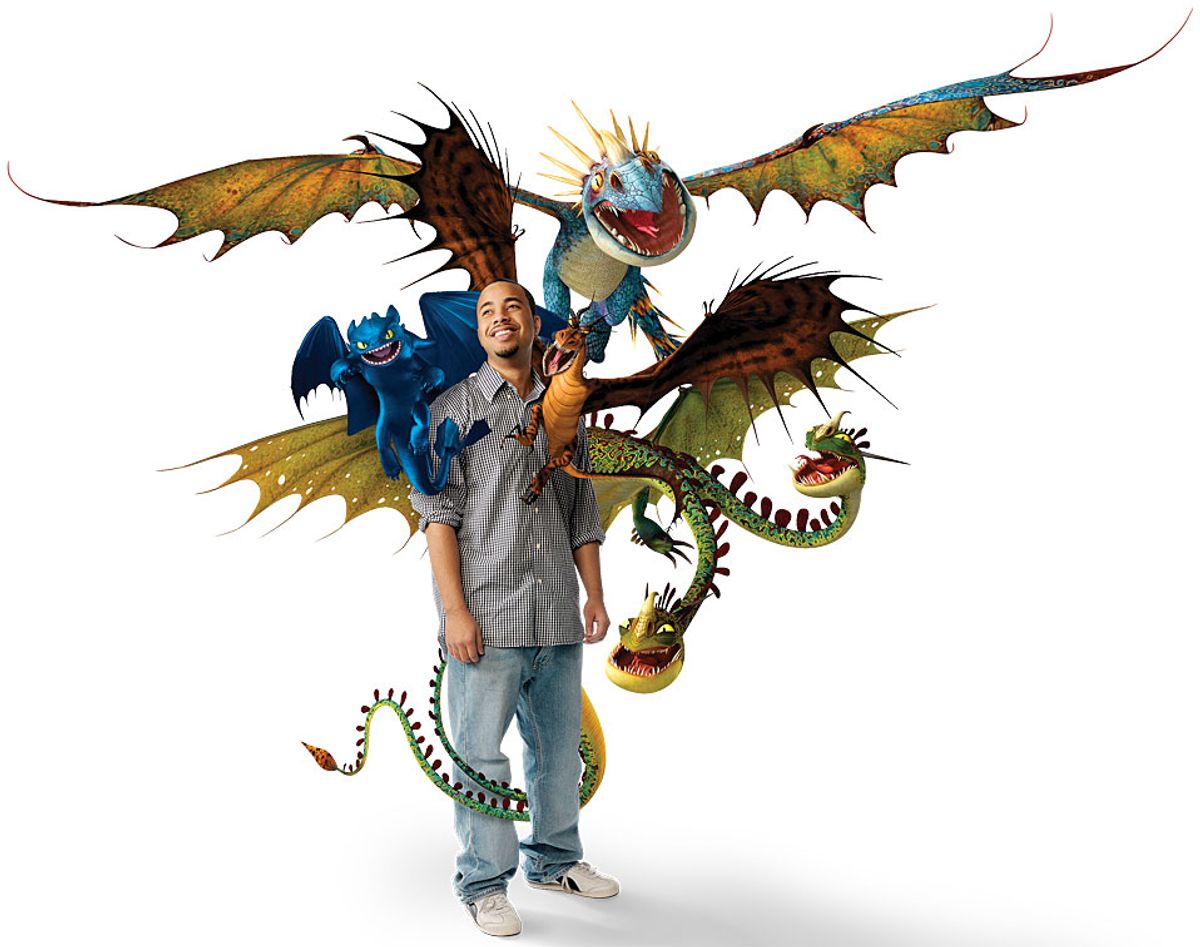Dream Jobs 2010: Jacob Melvin, Technical Director at Dreamworks Animation
How a struggling student found a dream come true at Dreamworks Animation

This profile is part of IEEE Spectrum’s Special Report on Dream Jobs 2010.
Flash forward a few years. Melvin is now a technical director for DreamWorks Animation SKG in Glendale, Calif. He worked on Kung Fu Panda and is finishing up How to Train Your Dragon, due to hit theaters next month. He spends his days on the spectacular DreamWorks Animation campus, where fountains and streams wander through olive groves, palm trees shelter a beach volleyball court, and movie stars and famous directors drop by for screenings at the 148-seat theater. Emmys and Oscars glitter above cool tile floors, and the stunningly good food in the cafeteria is free.
Some guys have all the luck, huh?
Actually, it wasn’t luck that landed Melvin the job. It was obsession. His grades in college were marginal not because he wasn’t interested in studying computers but rather because he was too interested in computer applications that weren’t in the curriculum. He liked video games—particularly the animation sequences between levels—and wanted to create them. These days, some 250 U.S. colleges offer majors in video-game design. Not so then.
As a computer science major, Melvin quickly found out that his professors expected him to study computer security or networking systems, because that’s where local jobs were. That “made me want to get a new major,” he says, but instead he stuck with it, adding classes in media arts (targeted more toward film majors) and graphic design. Finally, in the last of his four years, the university offered a single class in game design, focused on educational simulations.
He took the course and developed a strategy game based on the U.S. Revolutionary War. It was the first time he’d ever built a game end to end. Previously, he’d spent his spare time on small projects related to game design—he made a 3-D rain simulator, for example.
The experience was disillusioning. “I liked the graphics part but not all the minute details,” Melvin says. “You have to think of everything a player could do and make sure that you have that case covered. That can get really tedious.”
Meanwhile, for his senior project he was working with a local company designing a Web-based tool to convert still photographs into comic-strip art. Melvin wrote software to segment the photographic image, grouping pixels together to form objects. He found the task fascinating but had no idea where it might lead.
In March 2007, Melvin flew to Columbus, Ohio, for the National Society of Black Engineers’ career fair. He planned to hand out résumés and then not think about the job hunt again until he was sure he would be graduating.
Passing a booth, he picked up a brochure and started reading an article about the making of the movie Shrek. A man stepped forward to chat, asking him questions about his interests and education. “I kept answering his questions, but I didn’t look up, because I was interested in the article,” Melvin says. Finally, he finished reading and only then noticed that the man was wearing a polo shirt with the Shrek logo. The lightbulb went on. “This guy’s from DreamWorks and is interviewing me,” he thought.
He gave the DreamWorks rep his résumé. The next day, he met with several more managers. By the end of the weekend, the DreamWorks folks told Melvin to expect a job offer in the mail.
“I would say my senior project helped to get them to take me seriously,” Melvin says. “And I told them that ever since high school the only option for me was graphics”—that he’d always intended to use everything he learned studying computers to do something with graphics.
Today, as a technical director, Melvin works with a team of animators. On a big movie—with 50 or more animators—he’ll be one of two or three technical directors. The animators are often trying to do things that have never been done before, and that causes problems. Melvin’s job is to fix those problems so the movie can get made, on time and within budget. He might rewrite old code, build a new software tool, or create a graphical user interface to let an animator work faster.
Melvin cites a recent example from How to Train Your Dragon. The character Stoick has a complex beard that needs to move naturally. This movement had to be simulated to make sure that the beard didn’t bump into things in the scene, but simulating Stoick and his beard took up to six times as long as it did for a simpler character. To make things worse, the existing software ran the individual character simulations sequentially, so Stoick’s appearance in a scene slowed the whole process down dramatically. Melvin rebuilt the pipeline to run multiple character simulations in parallel, so by the time the computer completed running Stoick, all the other character simulations were complete as well. “Future movies will be better off because we have tools in place for these kinds of setups,” he says.
Melvin intends to stay in the movie industry but may branch out from his current role; he’s intrigued by crowd programming and by character rigging, which basically involves writing the code that defines how an animated character moves.
For now, though, at age 26, he’s pretty pleased with his career. “Kung Fu Panda and How to Train Your Dragon, I think, are movies that will be classics. My kids will watch them. Which means that there are millions of other kids that are going to be watching those same movies over and over. And I was actually a part of them.”
This article originally appeared in print as “DreamWorker.”
To Probe Further
For more articles and special features, go to Dream Jobs 2010.

